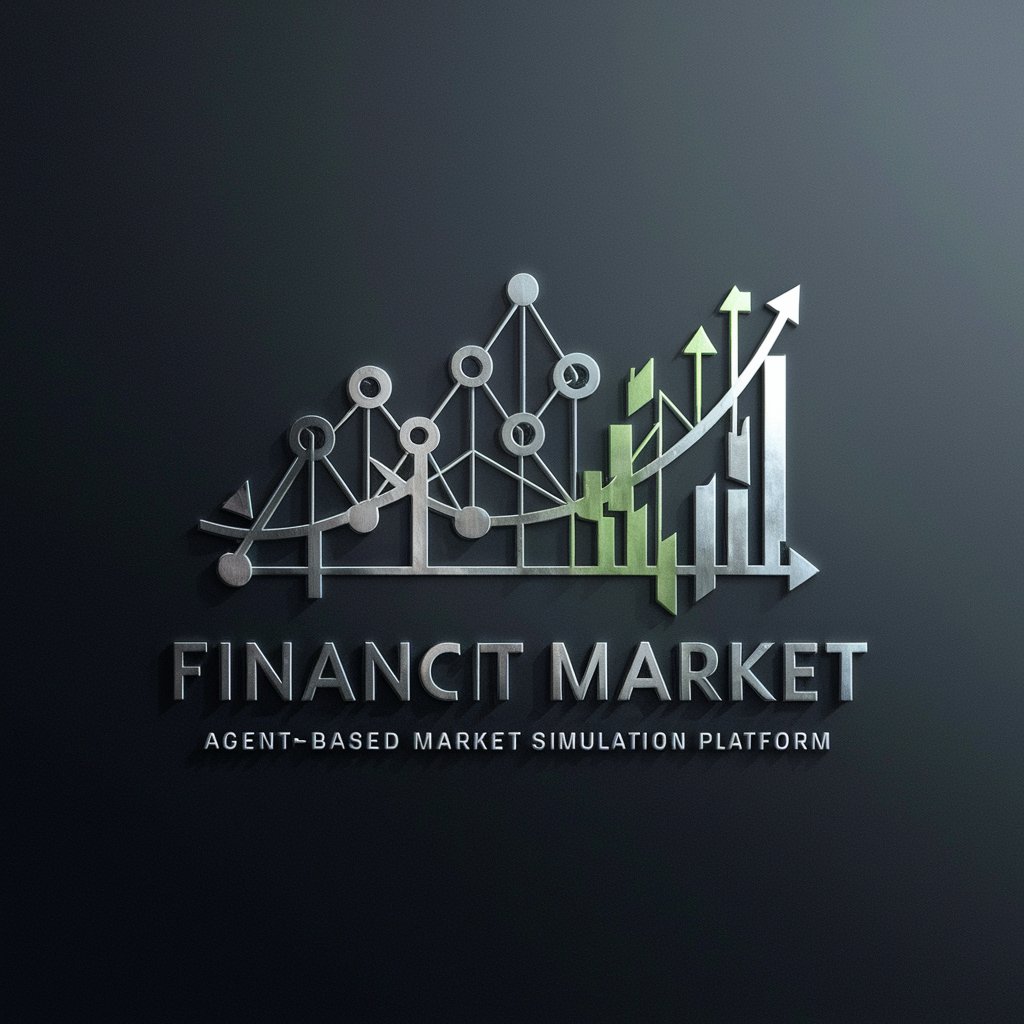Financial Market Simulation for (ABM) - ABM Market Insights

Welcome to our financial market simulation platform!
Simulate Markets, Power Decisions
How do agent interactions shape market dynamics in ABMs?
What role does learning play in agent-based financial simulations?
How can external events influence agent behavior in financial markets?
What are the benefits of using ABM over traditional financial models?
Get Embed Code
Introduction to Financial Market Simulation for (ABM)
Financial Market Simulation for Agent-Based Modeling (ABM) is designed to analyze and model the behavior of traders and financial institutions within a dynamic market environment. The simulation utilizes individual agents, such as retail traders and institutional investors, to represent market participants. These agents operate under a set of rules that govern their interactions and decision-making processes, including buy/sell decisions, risk management, and responses to market conditions and external events. An example of application includes simulating a market scenario where agents react to an unexpected economic news release, leading to rapid changes in market prices and trading volumes. This helps in understanding the impact of news on market dynamics and can inform strategies to mitigate risk or capitalize on market movements. Powered by ChatGPT-4o。

Main Functions of Financial Market Simulation for (ABM)
Price Discovery and Market Dynamics
Example
Simulating how different types of news (e.g., economic reports, geopolitical events) affect asset prices.
Scenario
Researchers can study how information dissemination influences traders' perceptions and behaviors, leading to fluctuations in asset prices.
Learning and Adaptation
Example
Incorporating reinforcement learning where agents adjust their strategies based on the outcomes of their trades.
Scenario
This function allows the simulation to model how traders evolve their strategies over time, improving their decision-making processes in response to market successes or failures.
Regulatory Impact Analysis
Example
Exploring the effects of regulatory interventions like trading halts or leverage restrictions on market stability.
Scenario
This helps policymakers understand the potential impacts of regulations and fine-tune them to achieve desired market behaviors, such as reducing excessive volatility.
Ideal Users of Financial Market Simulation for (ABM)
Academic Researchers
Researchers in economics and finance use the simulation to test theories about market behavior and agent interaction, contributing to academic knowledge and publications.
Financial Regulators
Regulators utilize these simulations to understand the potential impact of policy changes and to design interventions that help maintain market stability.
Market Strategists and Risk Managers
Professionals in financial institutions employ ABM simulations to assess risk scenarios and to develop strategies that mitigate risks while optimizing trading performance.

Using Financial Market Simulation for ABM
Step 1
Begin your exploration at yeschat.ai for a no-cost trial, no login required.
Step 2
Familiarize yourself with the basic concepts of agent-based modeling and financial market dynamics through provided resources and tutorials.
Step 3
Define the parameters of your simulation, including the types of agents (traders, financial institutions), their behaviors, and the market rules they will follow.
Step 4
Run simulations to observe how different scenarios affect market dynamics and agent behaviors, adjusting variables to explore various outcomes.
Step 5
Use the analytics and visualization tools to interpret the results, draw conclusions, and refine your model for more accurate predictions or deeper insights.
Try other advanced and practical GPTs
Eco-Friendly DIY Crafts
Craft Sustainably with AI

Education Philanthropy Navigator
Powering Smart Education Philanthropy

Mental Architect
Elevate Your Mind with AI

Romslo Entertainment
Elevate Your Events with AI-Powered Entertainment

Hungary Tour Guide
Explore Hungary with AI-powered guidance

City Tour
Discover Cities Smartly, Powered by AI

설득력 있는 글쓰기
Empower Your Words, Drive Action

マーケティング応用の秘訣
Revolutionize Marketing with AI

M&Aマーケティング BOT
Empowering M&A with AI Insight

マーケティングの城
Empowering Marketing with AI

基礎化粧品マーケティングPerfect
Empowering Cosmetic Innovation with AI

【記事作成】注文住宅業界向け
AI-powered Custom Home Content

FAQs on Financial Market Simulation for ABM
What types of agents can be modeled in an ABM for financial markets?
You can model various types of agents including individual retail traders, institutional investors, banks, and hedge funds. Each agent can be equipped with unique strategies, risk profiles, and decision-making processes.
How do learning mechanisms work within ABM?
Agents can adapt and learn using mechanisms like reinforcement learning, where outcomes from previous trades inform future decisions, or through genetic algorithms that simulate evolution of strategies over generations.
What role do external events play in ABM simulations?
External events such as economic reports or geopolitical developments are integrated into simulations to see how they impact market behavior and agent responses, thus providing a dynamic trading environment.
Can ABM simulate market crises like crashes or bubbles?
Yes, ABM is particularly effective in simulating market anomalies like crashes or bubbles, which emerge from the complex interactions and collective behavior of individual market participants.
How can ABM help in regulatory policy testing?
ABM allows regulators to test the impact of different policy interventions on market stability and efficiency, providing a safe sandbox to understand potential outcomes before implementing policies in real markets.
